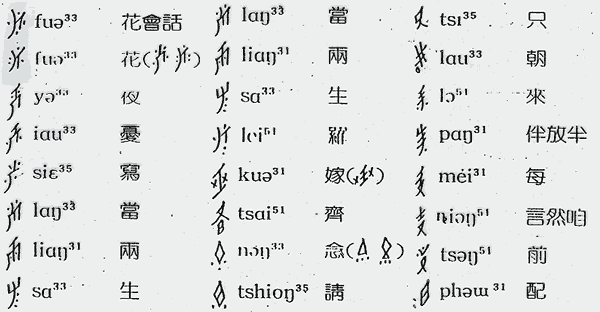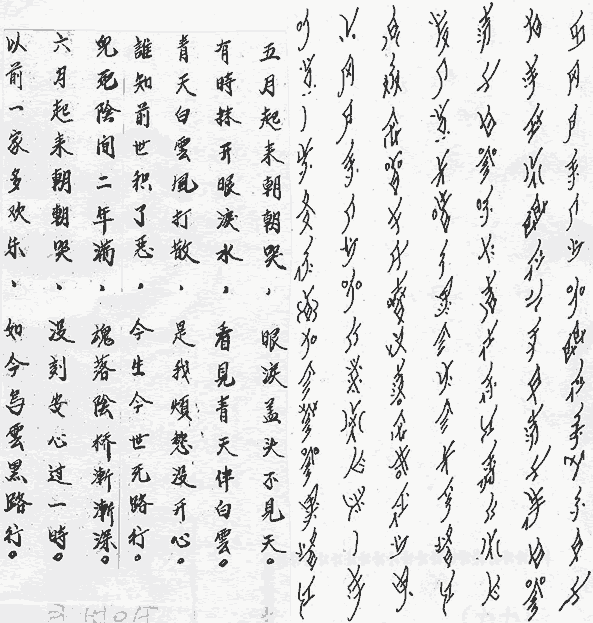Nüshu (女书)
Nüshu is a syllabic script created and used exclusively by women in Jiangyong
Prefecture, Hunan Province, China. The women were forbidden formal education for many
centuries and developed the Nüshu script in order to communicate with one another.
They embroidered the script into cloth and wrote it in books and on paper fans.
Nüshu was mainly used in the creation of San Chao Shu (三朝書)
or “Third Day Missives”, cloth-bound booklets created by mothers to give to their daughters
upon their marriage, or by woman to give to their close female friends. The San Chao Shu
contained songs written in the Nüshu script expressing hopes and sorrow, and was delivered
on the third day after a woman’s marriage.
The last proficient user of Nüshu, Yang Huanyi, died on 20th September 2004 at the age of 98.
More details
Recently there has been a revival of interest in Nüshu and a number of women are studying
it and using it again.
More details
Notable features
- The Nüshu script consists of between 1000 and 1500 characters.
- Nüshu is written in vertical columns running from top to bottom
and from right to left. - Many Nüshu characters are based on Chinese characters, while
some are modelled on embroidery stitches and designs. - Nüshu characters represent pronunciation, unlike Chinese
characters, which represent pronunciation and meaning. - Nüshu was taught to women by their mothers or grandmothers.
Used to write
Chéngguān Tǔhuà (城関土话), a dialect of Tǔhuà
spoken in the area where Nüshu is used.
A selection of Nüshu characters and their Chinese equivalents

Sample text in the Nüshu script with Chinese translation

Links
World of Nüshu, by Orie Endo
http://www2.ttcn.ne.jp/~orie/home.htm
Some information about the Nüshu script
http://www.socialstudiesforkids.com/articles/currentevents/nushu1.htm
